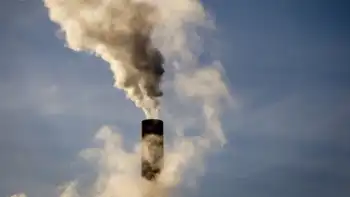Nation's oldest nuclear plant showing its age
Those problems followed corrosion that left the reactor's crucial safety liner rusted and thinned.
The U.S. Nuclear Regulatory Agency and the plant's owners, Chicago-based Exelon Corp., insist the Oyster Creek Nuclear Generating Station can operate safely until it is 60 years old.
Not everyone is convinced.
"This plant is a 1969 Buick in the age of the Prius," said Jeff Tittel, president of the Sierra Club's New Jersey chapter. "Talk about cash for clunkers: This is the biggest clunker that's out there, and the people of New Jersey are on the hook for it for the next 20 years."
Oyster Creek went online December 1, 1969, the same day as the Nine Mile Point Nuclear Generating Station near Oswego, N.Y. But Oyster Creek's original license was granted first, technically making it the oldest of the nation's 104 commercial nuclear reactors that are still operating.
Located about 60 miles east of Philadelphia and 75 miles south of New York City, Oyster Creek generates 636 megawatts of electricity, enough to power 600,000 homes a year, and provides 9 percent of New Jersey's electricity.
In April, the NRC granted Oyster Creek a new 20-year license after it dismissed objections from anti-nuclear and environmental groups.
The opposition centered on corrosion to the plant's drywell shield, a metal enclosure that keeps superheated radioactive steam within a containment building around the reactor.
Exelon had applied a strong coating material to the liner and removed a sand bed at the base of the reactor that was found to hold moisture that caused the corrosion.
Oyster Creek's design — a boiling-water reactor — is considered obsolete by today's standards.
But it can still be operated safely, said Darrell Roberts, director of the NRC's Division of Reactor Safety.
"The agency believes the plant is operating safely, or we wouldn't allow it to operate," he said.
Just a week after Oyster Creek got its new 20-year license, workers replacing a cable to an emergency service water pump found detectable levels of tritium in water nearby. The leak was determined to have come from two buried pipes that had not been properly insulated the last time they were worked on in 1991.
A second tritium leak was discovered in August, this time from a pipe leading into an electrical turbine building.
The tritium contaminated groundwater on the plant site and has been flowing into a discharge canal that leads into the fragile Barnegat Bay. But the vast amount of water in the canal is diluting it below detectable levels, the agency says, adding that drinking water supplies and recreational fishing and crabbing in the area remain safe.
Tritium occurs naturally in the environment at very low levels and may be released as steam from nuclear reactors. It also can leak into soil and groundwater.
The leaks have prompted the NRC to order its staff to look for better ways to detect and prevent leaks in buried pipes at all U.S. nuclear power plants.
Paul Gunter, an official with Beyond Nuclear, a Maryland anti-nuclear group, said the NRC appears to be adopting a "leak first, fix later" approach.
"We continue to see the industry and the NRC trivialize these leaks of tritium into groundwater," he said. "These leaks are going to proliferate and get worse."
In February, a fire at an electrical transformer shut down the plant. It took firefighters 15 minutes to bring it under control.
Plant spokesman David Benson said the cause was a manufacturing defect in a transformer that had repeatedly passed inspection before it went bad.
In July, severe thunderstorms in the area knocked the plant offline, and operators had to declare an "unusual event" — the lowest level of alert — when emergency power supplies did not start up as quickly as expected.
Related News

Fixing California's electric grid is like repairing a car while driving
LOS ANGELES - Mark Rothleder, Chief Operating Officer and Senior Vice President at the California Independent System Operator (CAISO), which manages roughly 80% of California’s electric grid, has expressed cautious optimism about meeting the state's ambitious clean energy targets. However, he acknowledges that this journey will not be without its challenges.
California aims to transition its power system to 100% carbon-free sources by 2045, ensuring a reliable electricity supply at reasonable costs for consumers. Rothleder, aware of the task's enormity, likens it to a complex car repair performed while the vehicle is in motion.
Recent achievements have demonstrated California's ability to temporarily…





